History of Chicago
The 19th century
Early growth
Chicago’s critical location on the water route linking the Great Lakes and the Mississippi River shaped much of its early history. It was populated by a series of native tribes who maintained villages in the forested areas near rivers. Beginning with Father Jacques Marquette and French Canadian explorer Louis Jolliet in 1673, a steady stream of explorers and missionaries passed through or settled in the region, but it was not until 1779 that the first nonnative resident made it his permanent home: Jean-Baptist-Point Du Sable maintained a thriving trading post near the mouth of the Chicago River until 1800, when he moved out of the region. Within a few years the federal government had erected Fort Dearborn to establish a military presence in the area. The garrison was located on the south bank at the river mouth; it was destroyed during the War of 1812 but was rebuilt in 1816. By that time, numerous traders linked the region with international fur markets. Even after Illinois became a state in 1818, however, Chicago remained a small settlement. It was incorporated as a town in 1833 with a population of about 350.
Know how the Chicago Board of Trade influenced the city’s industries’ and uplifted the entrepreneurial spirit
Know how the Chicago Board of Trade influenced the city’s industries’ and uplifted the entrepreneurial spiritSee all videos for this article
Population growth remained stagnant until the federal government allocated funding that allowed work to begin on the Illinois and Michigan Canal, a vital link between Lake Michigan and the Illinois River. Because the project was to be financed largely by sales of adjacent land, which would benefit from the commerce it brought, the canal helped to fill Chicago with speculators. The boom led to a second incorporation, this time as a city, on March 4, 1837; the population was 4,170. That same year a devastating national economic depression delayed the city’s development for several years. Canal construction drew thousands of Irish labourers to the area, when what was supposed to be a simple ditch a few hundred yards long grew into a waterway of some 75 miles (120 km), often cut through solid rock. After the canal opened in 1848, it brought grain and other raw materials to the city, while providing what was then a fast and convenient means of travel to the interior of the state.
Emergence as a transportation hub
Chicago’s railway age also began in 1848, when a locomotive named the Pioneer arrived by ship from Buffalo, New York, and went into service for the new Galena and Chicago Union Railroad. The line’s 11-mile (18-km) track extended straight west from the city, but its namesake destination, the lead-mining metropolis in the northwest corner of the state, declined in importance before extensions even reached it. Other lines soon extended to the west, including the Chicago, Burlington and Quincy, the Rock Island, and the Illinois Central. The Chicago and Milwaukee line linked the rival ports by rail. In 1852 two separate lines entered from the east and provided direct rail service to the Eastern Seaboard. By the beginning of the 20th century, no fewer than 30 interstate routes fanned out from the city, and the resulting ease in reaching both raw materials and markets contributed to the city’s rapid commercial and industrial development. Most important of all, Chicago was the terminus of every one of the railroads; passengers, raw materials, and finished goods all had to be transferred between lines in the city, thus contributing to an extraordinary development of hotels, restaurants, taxicabs, warehouses, rail yards, and trucking companies.
The railroad, along with the telegraph, the grain elevator, agricultural newspapers, and the trading floor of the Chicago Board of Trade, facilitated the collection of commodities from the farm belt, which was rapidly developing to the west. The city soon became the focal point of a “golden funnel” that collected and processed grain, lumber, and meat and then sent them to markets in the eastern United States and Europe. Trade encouraged ancillary industries such as the manufacture of steel rails and railroad equipment, shipbuilding, packaging, and printing, as well as the development of hotels and restaurant facilities. However, nothing at that time personified Chicago industry more than meatpacking and the vast Union Stock Yards on the city’s Near Southwest Side.
Conflagration and rebirth
Chicago’s growth was unprecedented. The population reached nearly 30,000 in 1850 and was triple that a decade later. Cheap transportation to the outskirts of the city encouraged middle-class dispersal, but poor neighbourhoods near the downtown area were congested; structures there were also built of wood. Serious fires were frequent, but no one could have anticipated the events of the evening of October 8, 1871. Months without rain had parched the city, and a major fire the previous night had exhausted firefighters and damaged equipment. It is not known what happened in the De Koven Street barn of Patrick and Catherine O’Leary, on the city’s West Side. Vandals, milk thieves, a drunken neighbour, spontaneous combustion, even (though unlikely) the O’Learys’ legendary cow—any could have started a blaze there that roared out of control in minutes. Misdirected fire equipment arrived too late, and a steady wind from the southwest carried the flames and blazing debris from block to block. The slums became kindling for the downtown conflagration, where even the supposedly fireproof stone and brick buildings exploded in flames as the destruction swept northward. Only rainfall, the lake, and stretches of unbuilt lots on the North Side finally halted the wave of destruction a full day after it started. The most famous fire in American history claimed about 300 lives, destroyed some 17,450 buildings covering almost 3.5 square miles (9 square km), and caused $200 million in damage. Roughly one-third of the city lay in ruins, and an equal proportion of the population—nearly 100,000 people—was homeless.
Chicago rebuilt quickly, reached more than a half million residents in 1880, and accomplished construction miracles. As a response to public health concerns, the newly formed Sanitary District of Metropolitan Chicago began work in 1889 on the Chicago Sanitary and Ship Canal, the waterway that when opened in 1900 not only allowed larger vessels to pass through the port of Chicago but also made it possible to reverse the flow of the Chicago River; the improvement in public health once pollutants were carried away from Lake Michigan was dramatic. Meanwhile, a host of talented architects that included Louis Sullivan, Dankmar Adler, William Holabird, Daniel H. Burnham, John Wellborn Root, and William Le Baron Jenney, who had been attracted to Chicago by the postfire rebuilding opportunities, stayed on in the 1880s to design a new generation of even taller downtown buildings. Department stores and offices crowded into the central area, and industrial growth along the river branches and rail lines was equally phenomenal. Commuter railroads and transit improvements promoted outward residential dispersal of the middle class, a clientele served by a young Frank Lloyd Wright and the emerging “Prairie school” architects. This suburban boom prompted the city to annex some 125 square miles (324 square km) in 1889, which included many adjacent communities and also much open farmland.
Chicago since c. 1900
“No little plans”
The fair opened during a financial panic and closed during a deep depression, but the city’s recovery four years later was dramatic. Chicago’s population surged past two million in 1907 and three million in 1923. The city eagerly adopted every transportation innovation: streetcars moved first by horses, then by means of underground cables, and finally by electricity were supplemented in the 1890s by the first elevated rail lines. However, every transportation innovation seemed to produce only more congestion. The railroads also left their physical mark on the city. Concerns over grade-crossing safety forced the rail lines to construct tall embankments for their tracks, which, in turn, walled off neighbourhoods. The smoke and noise from thousands of freight trains and hundreds of passenger-train arrivals and departures each day saturated the city in gloomy soot and jangled its nerves.
Chicago was well on its way to choking on its growth when architects Daniel H. Burnham and Edward P. Bennett unveiled their 1909 Plan of Chicago. Commissioned by two private commercial organizations, the plan provided a rational transportation-based blueprint for urban growth, notably in the central area. It promised to replace ugliness and congestion with extraordinary beauty and efficiency. Although plans for relocating railroads were ignored, Chicago’s city government eagerly adopted ideas for plazas, major thoroughfares that bridged railway tracks, a double-deck street along the river downtown, monumental bridge structures, and the preservation of the lakefront for park purposes—inspired by Burnham’s now-famous credo “Make no little plans.” The document was never officially adopted by the city council, but it became a shopping list for projects started during the 1920s, including construction of the Michigan Avenue Bridge and the Outer Drive. In 1916 the city completed the 1.5-mile- (2.4-km-) long Municipal (later Navy) Pier as a combination shipping warehouse and public recreation retreat. But the city, under the leadership of Mayor William Hale (“Big Bill”) Thompson, went into debt far beyond its ability to repay, and the double-deck Wacker Drive and Outer Drive Bridge improvements remained unfinished at the onset of the Great Depression.
Chicago became notorious during the Prohibition years of the “Roaring” 1920s as a wide-open town, gaining a reputation for corruption, gangsterism, and intermittent mayhem. Al Capone, John Dillinger, and the St. Valentine’s Day Massacre became bywords worldwide. Furthermore, the city government was virtually insolvent years before the 1929 stock market crash. Republican Thompson was defeated by Democrat Anton Cermak in 1931, the first of a long string of Democratic mayors. Cermak, however, fell two years later to an assassin’s bullet intended for U.S. President-elect Franklin D. Roosevelt, who was visiting the city. The new mayor, Edward J. Kelly, gladly accepted federal relief funds that employed thousands on projects that completed the Outer Drive Bridge, built the State Street subway, and constructed hundreds of miles of streets, sewers, sidewalks, and curbs. Workers for other relief projects painted murals in post offices and schools, collected sources for historical research, and provided free music. Chicago’s WPA Federal Theatre created Swing Mikado, which later enjoyed success on Broadway, and also developed new techniques of improvisational comedy and puppetry. In 1933–34 Chicago played host to its second world’s fair, the Century of Progress Exposition, organized to mark the centennial of the town charter. Conceived initially to displace the Capone crime era from the city’s image, the fair turned into a celebration of technology as the saviour of the country’s economy. Its Art Deco–style architecture and brilliant colours were a lure for tens of millions of visitors during its run.
Decline and confrontation
World War II placed Chicago in a strategic production role because of its diverse industrial base, and the city’s economy boomed. In addition, the nearby Great Lakes Naval Training Center and Fort Sheridan were major induction and basic-training facilities, and Northwestern University operated the country’s largest naval midshipmen’s school. Thousands of naval pilots also passed through Glenview Naval Air Station, receiving flight instruction on two aircraft carriers on the lake that were converted from old passenger vessels. As the country’s rail hub, Chicago hosted traveling military personnel in four Chicago servicemen’s centres; one of them, the historic Auditorium Building, not only served 24 million meals by the war’s end but also saw its magnificent stage used as a bowling alley.
The postwar years began a period of many adjustments. In 1947 Mayor Kelly was replaced by a reform-oriented businessman named Martin Kennelly, whose eight years in office ended with the election of Richard J. Daley in an intra-party coup. Chicago reached its population peak of 3.62 million in 1950, but by that time there were already signs of impending industrial decline. In addition, the city’s social fabric was changing. Chicago went through many difficult years of increasing racial tensions, as its expanding African American community sought to escape the boundaries of segregated neighbourhoods. Some efforts to achieve this were peaceful, such as the crusade that brought civil rights leader Martin Luther King, Jr., to Chicago in 1966. However, Black frustrations also spilled over into violence, including riots in the summer of 1967 and even larger ones following King’s assassination (in Memphis, Tennessee) in 1968. Whites generally responded by leaving the city in increasing numbers for the suburbs.
The bloody confrontation that erupted between anti-Vietnam War protesters (and other demonstrators) and police at the 1968 Democratic National Convention in Chicago focused negative attention on the city and the last major old-fashioned big-city political machine in the country. However, the growing difficulties and uncertainties of the postwar era that, essentially, came to a head at the convention help explain why so many Chicagoans held on for so long to the Democratic machine, especially as it developed under Daley. His leadership gave them jobs, representation by nationality, and, most important, some sense of predictability in a changing world.
Know about the efforts for the development of the North Loop area of Chicago and the successful building of the James R. Thompson Center
Know about the efforts for the development of the North Loop area of Chicago and the successful building of the James R. Thompson CenterSee all videos for this article
Renewal
Although some of Chicago’s neighbourhoods decayed and much of its industry moved either to the suburbs, out of state, or overseas, the city’s central area began to revive in the late 1950s under Daley’s leadership. The John Hancock Building, the Sears (now Willis) Tower, and dozens of other new office structures in the Loop and Near North areas, as well as the emergence of O’Hare International Airport as the country’s air hub, provided enticements for attracting corporate headquarters. By the mid-1970s the downtown office revival was beginning to produce the first signs of gentrification in nearby neighbourhoods. The political upheaval that followed Daley’s death in 1976 drew headlines away from the nascent downtown revival. The initiation of Chicagofest, a music and food extravaganza that was later transformed into the Taste of Chicago, signaled the beginning of what has been a continuing city effort to lure suburban leisure spending back to the city through a series of outdoor special events.
In 1989 Daley’s son, Richard M. Daley, took office as mayor and placed even more emphasis on attracting corporate headquarters, trade, tourism, and the convention business. The influx of new residents to downtown, as well as growing Hispanic and other ethnic communities, brought a halt to half a century of population decline, and Chicagoans numbered some 2.8 million by the early 21st century. Two events held in Chicago in the 1990s—several opening matches of the 1994 World Cup football (soccer) finals and the 1996 Democratic National Convention—were great successes for the city and garnered it considerable national and international notice. In 2007, shortly after Daley was reelected to his fifth (and fourth full) term as mayor (his first had been for two years), the city was selected as the U.S. entry for hosting the 2016 Olympic Summer Games; however, it was eliminated in the first round of voting by the International Olympic Committee. (Rio de Janeiro was chosen in the third round.)
The second Daley era began drawing to a close when the mayor announced in September 2010 that he would not seek reelection to a seventh term, and a mayoral election was called for February 22, 2011. An initially wide field of hopefuls was ultimately winnowed to six candidates. The front-runner was Rahm Emanuel, who stepped down from his position as White House chief of staff under Pres. Barack Obama in order to run for Chicago mayor. Emanuel won the election and took office on May 16. His first term was characterized in part by a controversial decision to close dozens of public schools. In his 2015 bid for reelection, Emanuel failed to win a majority in the first round of voting in February and faced his nearest challenger, Jesús (“Chuy”) García, a longtime public servant, in the city’s first-ever mayoral runoff election. Emanuel was victorious, however, in the April contest.
Creativity, a fascinating mix of cultures, bold new buildings, a vital economy, and the dichotomy between wealth and poverty continue to mark life in Chicago. While it deservedly celebrates a rich cultural past, Chicago remains the innovative cultural centre of the Midwest. Much as it did more than a century ago, the city continues to attract talented young artists, musicians, actors, and writers from throughout the region.
Source: https://www.britannica.com/place/Chicago/Cultural-life

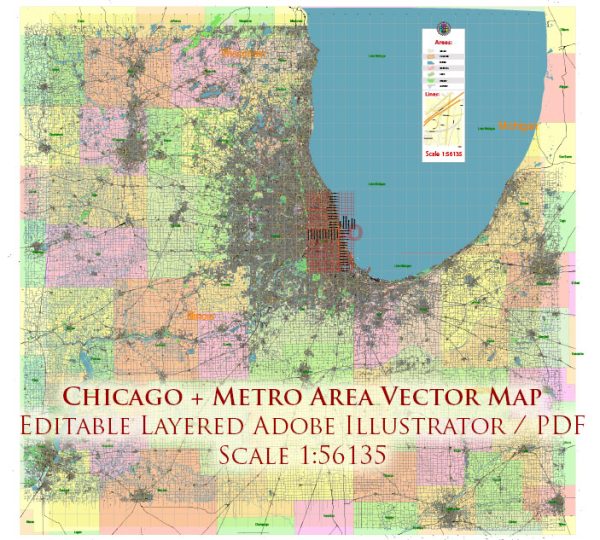
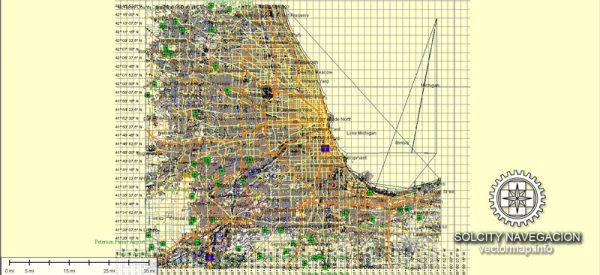
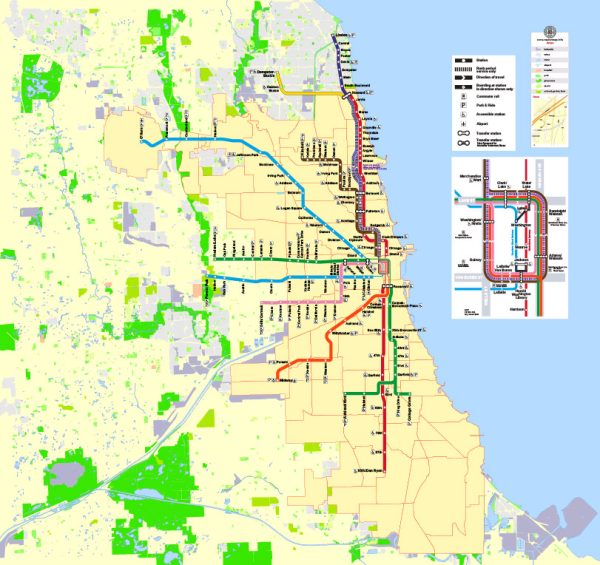
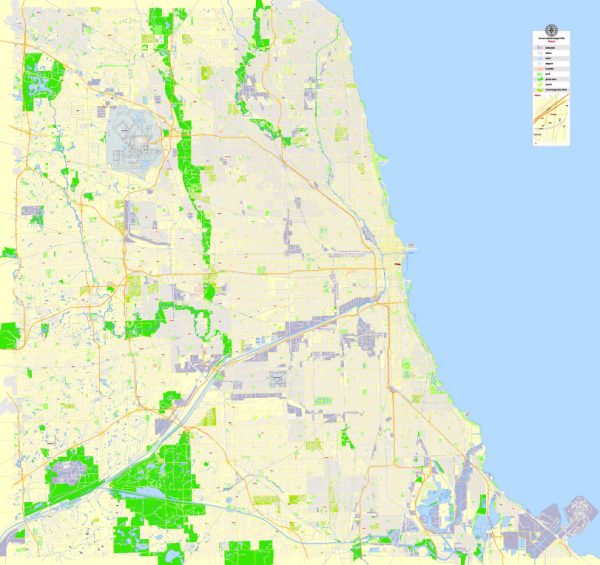
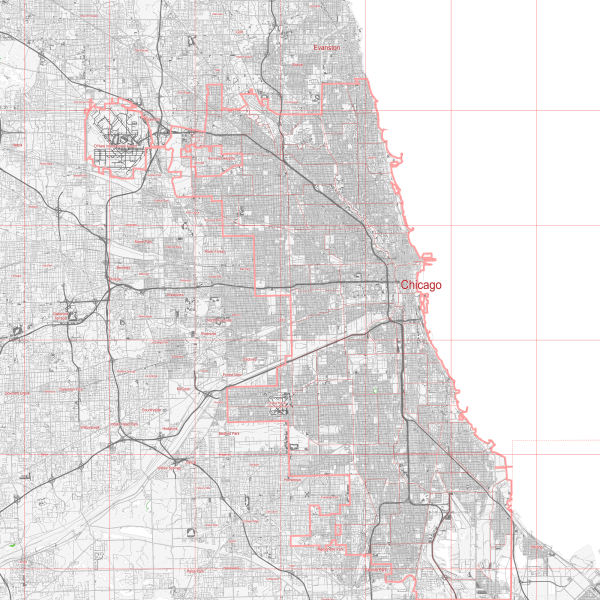
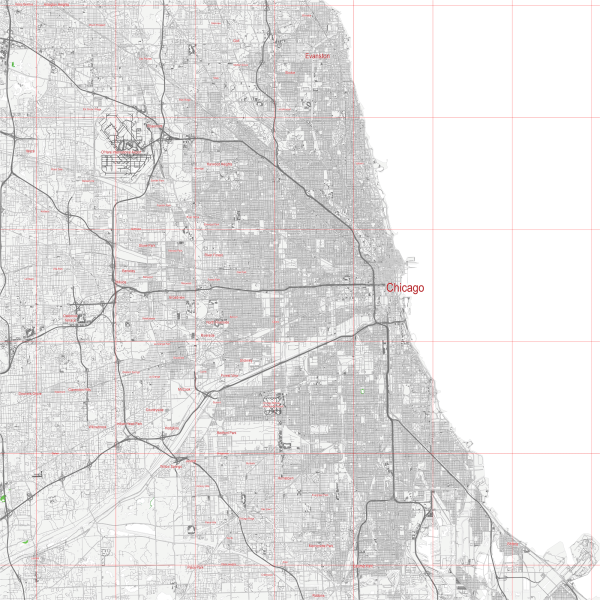
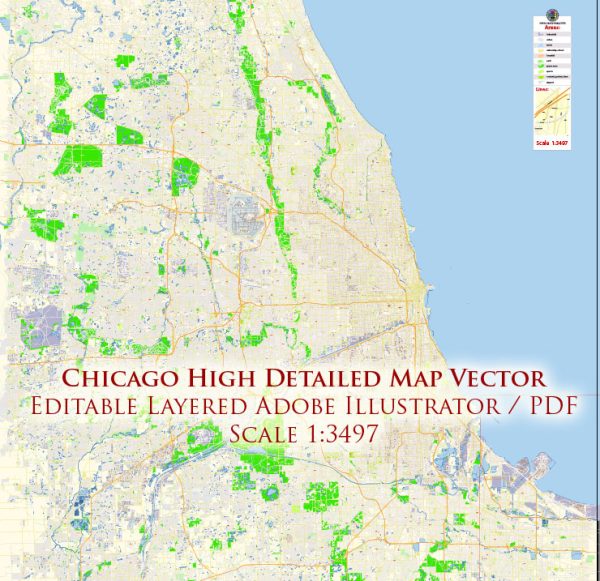
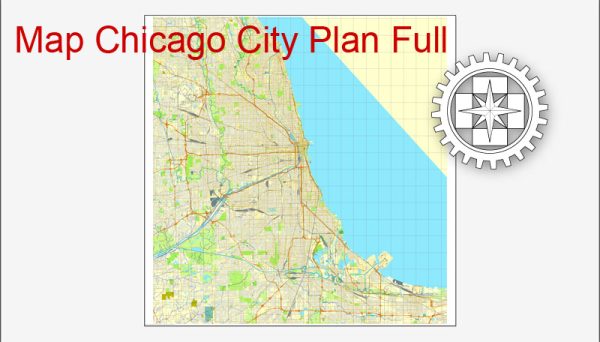
 Author: Kirill Shrayber, Ph.D.
Author: Kirill Shrayber, Ph.D.